10 segments to get 52% of ADP
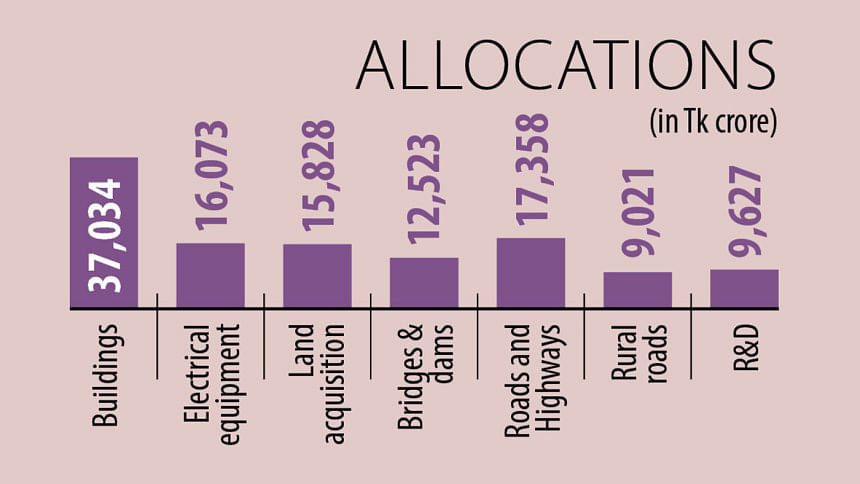
As much as 52 percent of the Tk 2,30,000 crore annual development programme (ADP) for the upcoming fiscal year will be spent on just 10 key segments, including government buildings, electrification, land acquisition and infrastructure.
For the first time, the planning ministry has used a digital budget planning system to categorise spending based on economic codes, allowing for more transparent tracking of fund utilisation, according to a presentation made by the planning ministry during yesterday's National Economic Council meeting. The development budget for fiscal 2025-26 was approved at the meeting chaired by Chief Adviser Muhammad Yunus.
Under the digital budget planning method, the allocations will be tracked and implemented through the iBAS++ system, ensuring code-based expenditure.
According to the planning ministry, Tk 28,018 crore will be spent only for non-residential government buildings and another Tk 9,016 crore will be spent for residential buildings under all the ministries and divisions.
In addition, the segment of other buildings and establishments would cost Tk 6,917 crore.
About Tk 16,073 crore would be spent on the buildings' electrification.
Another Tk 15,828 crore will be spent on land acquisition for various projects. Some Tk 6,505 crore would be spent to build bridges and Tk 6,473 crore for dams.
Another Tk 17,358 crore would be spent on building roads and highways, while rural roads will cost another Tk 9,021 crore. The government has allocated Tk 9,627 crore for research and development purposes.
Next fiscal year's ADP is Tk 14,000 crore more than the revised allocation for this year.
Of the total, Tk 144,000 crore will come from domestic resources -- lower than the Tk 1,59,000 crore sought by ministries -- while foreign funding remains unchanged at Tk 86,000 crore. Both figures reflect year-on-year declines of 12.7 percent and 14 percent respectively.
State-owned enterprises have been allocated Tk 8,000 crore, nearly half of their original outlay in the current year.
The government has allocated 70 percent of the ADP budget to five sectors: the transport and communication (Tk 58,973 crore), power and energy (Tk 32,392 crore), education (Tk 28,557 crore), housing and community (Tk 22,776 crore) and health (Tk 18,148 crore).
Among the government's ministries and divisions, the top 10 ministries got 74 percent of the total ADP allocation in the upcoming fiscal year.
The local government division got the highest allocation (Tk 36,098 crore), followed by the road transport and highways (Tk 32,329 crore), power division (Tk 20,283 crore), secondary and higher education division (Tk 13,625 crore), science and technology ministry (12,154 crore) and health service division (Tk 11,617 crore).
"It will be a budget for restoring discipline in the financial sector," said Planning Adviser Wahiduddin Mahmud after the meeting.
Though the budget size would be relatively small, it is designed to restore economic stability, control inflation and reintroduce discipline and sustainability in budget management.
"Our objective is to avoid falling into a debt trap, where a significant portion of the budget is consumed by loan repayments -- be it operating costs or interest payments."
To break this vicious cycle, revenue must be increased, but expenditure must also remain limited.
"We aim to keep the budget deficit below 4 percent of total GDP."
Education and health have received special attention in the budget.
The development budget for the two sectors would not increase, but the revenue budget would increase to accommodate teachers' higher salaries and the appointment of 2,500 new health workers, including doctors.
"In the health sector, despite many facilities being built, many are non-operational due to a lack of doctors or equipment. So instead of more infrastructure, we are focusing on operating these through the revenue budget," he said.
The government will increase allocation so that the non-government teachers' outstanding retirement benefits and welfare payments that have been pending for the last 5–6 years can be cleared immediately.
No long-term mega projects are being included in the development budget.
Although this year's development budget is smaller in nominal terms than last year's proposed budget, it is more realistic, he said.
"There was a lot of waste and inefficiency. We are now streamlining, downsizing and redesigning to reduce costs."
The budget would be announced on June 2, when the tax measures of the budget become effective immediately. As there is no parliament existing now, there will be windows for tax measures' corrections until the Finance Bill is announced through ordinances.
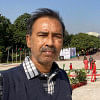

 For all latest news, follow The Daily Star's Google News channel.
For all latest news, follow The Daily Star's Google News channel. 

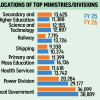

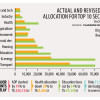

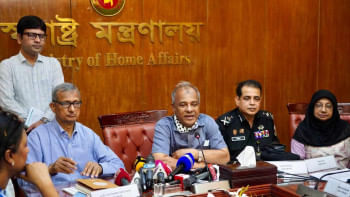
Comments